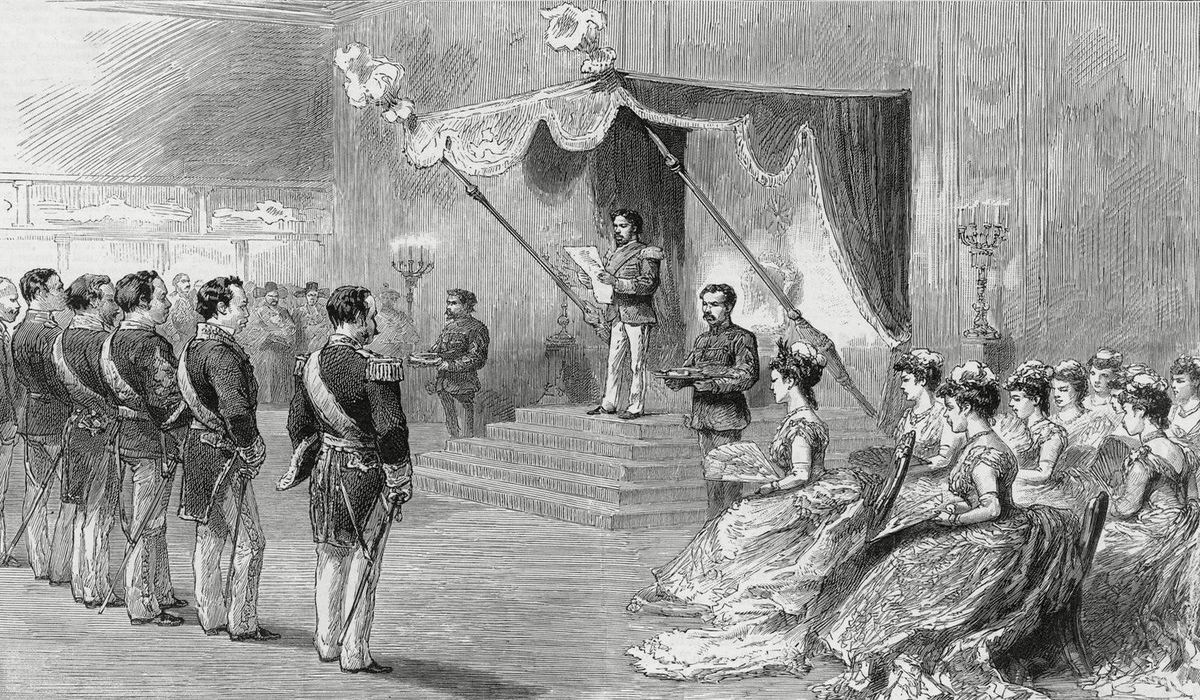
What was the Meiji Restoration? The Meiji Restoration was a pivotal event in Japanese history that began in 1868. It marked the end of the Tokugawa shogunate and the return of power to the emperor. This period saw Japan transform from a feudal society into a modern industrial state. Key changes included the abolition of the samurai class, the establishment of a centralized government, and the adoption of Western technologies and ideas. The Meiji leaders aimed to strengthen Japan to resist Western colonization. This era laid the foundation for Japan's rapid modernization and emergence as a global power.
Key Takeaways:
- The Meiji Restoration marked the end of feudal rule in Japan, leading to rapid modernization and significant changes in politics, society, and economy. It transformed Japan into a modern state with Western influences.
- Emperor Meiji played a central role in the restoration, symbolizing the new era of modernization and reform. The period saw the rise of a constitutional monarchy, adoption of Western technologies, and significant social and economic reforms.
The Meiji Restoration: A Turning Point in Japanese History
The Meiji Restoration was a pivotal period in Japan's history, marking the end of centuries of feudal rule and the beginning of rapid modernization. This era, which began in 1868, brought about significant political, social, and economic changes. Here are some fascinating facts about this transformative time.
The Fall of the Tokugawa Shogunate
The Meiji Restoration began with the fall of the Tokugawa Shogunate, which had ruled Japan for over 250 years. This shift in power was crucial for the modernization of Japan.
- The Tokugawa Shogunate was overthrown in 1868, ending a period of isolation and feudal rule.
- The last shogun, Tokugawa Yoshinobu, resigned and handed power back to the emperor.
- The fall of the shogunate was partly due to pressure from Western powers and internal dissatisfaction.
The Rise of Emperor Meiji
Emperor Meiji played a central role in the restoration, symbolizing the new era of modernization and reform.
- Emperor Meiji ascended the throne in 1867 at the age of 15.
- His reign lasted until 1912, making it one of the longest in Japanese history.
- The emperor moved the capital from Kyoto to Tokyo, which became the political and cultural center of Japan.
Modernization and Westernization
The Meiji Restoration was characterized by a rapid adoption of Western technologies and ideas, transforming Japan into a modern state.
- Japan adopted a Western-style constitution in 1889, establishing a constitutional monarchy.
- The government sent students and officials abroad to learn from Western countries.
- Railways, telegraphs, and modern postal systems were introduced, revolutionizing communication and transportation.
- Western clothing and hairstyles became popular among the Japanese elite.
Economic Reforms
Economic changes during the Meiji era laid the foundation for Japan's industrialization and economic growth.
- Land reforms abolished the feudal landholding system, allowing peasants to own land.
- The government invested heavily in infrastructure, including factories and shipyards.
- Zaibatsu, large industrial conglomerates, emerged and played a significant role in the economy.
- The introduction of a modern banking system facilitated economic development.
Social Changes
The Meiji Restoration also brought about significant social changes, affecting various aspects of Japanese life.
- The samurai class was abolished, and former samurai were integrated into the new society.
- Education became compulsory, and Western-style schools were established.
- Women gained more opportunities for education and employment, although gender equality was still limited.
- The caste system was officially abolished, promoting social mobility.
Military Reforms
Military modernization was a key aspect of the Meiji Restoration, transforming Japan into a formidable military power.
- The government established a conscript army, replacing the samurai-based military.
- Western military techniques and technologies were adopted, including modern rifles and artillery.
- The Imperial Japanese Navy was created, modeled after the British Royal Navy.
- Japan's military successes, such as the victory in the Sino-Japanese War (1894-1895), demonstrated its newfound strength.
Cultural Impact
The Meiji era also saw a blending of traditional Japanese culture with Western influences, creating a unique cultural landscape.
- Traditional arts, such as kabuki and tea ceremonies, were preserved and promoted.
- Western literature, music, and art were introduced, influencing Japanese culture.
- The Meiji period laid the groundwork for Japan's cultural renaissance in the 20th century.
The Lasting Impact of the Meiji Restoration
The Meiji Restoration reshaped Japan in ways that still resonate today. By ending centuries of feudal rule, it paved the way for a modern, industrialized nation. The abolition of the samurai class and the establishment of a centralized government were pivotal changes. Japan's rapid adoption of Western technologies and practices during this period set the stage for its emergence as a global power. The education reforms and economic policies implemented then laid the groundwork for Japan's future successes. Understanding these transformations helps us appreciate how a nation can reinvent itself. The Meiji Restoration wasn't just a historical event; it was a catalyst for Japan's evolution into a modern state. This era's legacy continues to influence Japan's culture, economy, and society, making it a fascinating chapter in world history.
Frequently Asked Questions
Was this page helpful?
Our commitment to delivering trustworthy and engaging content is at the heart of what we do. Each fact on our site is contributed by real users like you, bringing a wealth of diverse insights and information. To ensure the highest standards of accuracy and reliability, our dedicated editors meticulously review each submission. This process guarantees that the facts we share are not only fascinating but also credible. Trust in our commitment to quality and authenticity as you explore and learn with us.
